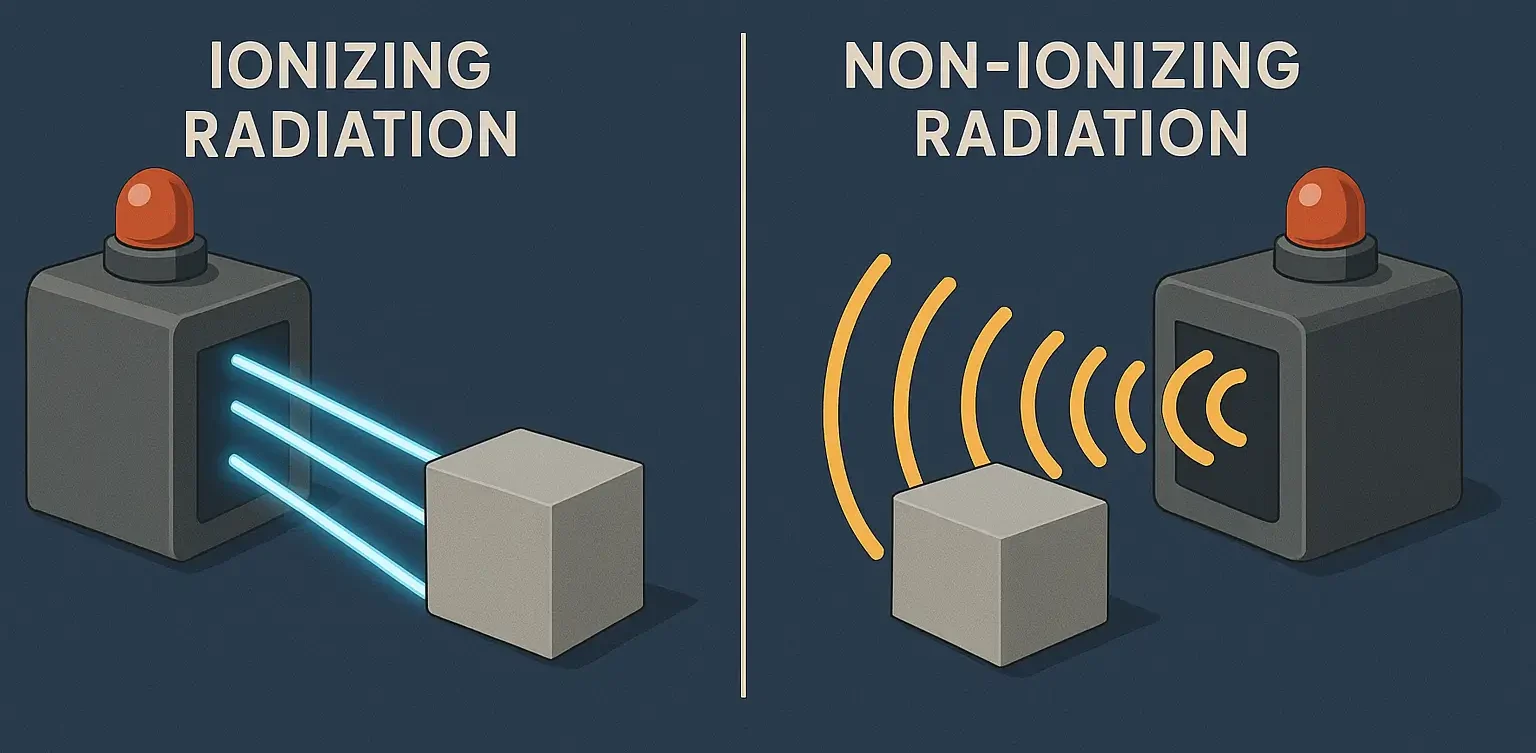- Radiation Method of Sterilization uses ionizing radiation to kill microorganisms.
- This method is highly effective and is commonly used for sterilizing medical devices, pharmaceuticals, and food products.
A) Ionizing Radiation Method of Sterilization
Principle
- Ionizing radiation (gamma rays, electron beams) generates free radicals that damage DNA and cellular components, leading to microbial death.
This is a sample ad placement!
Types:
-
Gamma Rays:
- Emitted from radioactive isotopes like Cobalt-60.
-
Electron Beams:
- High-energy electrons generated by linear accelerators.
-
X-Rays:
- Produced by x-ray machines at high voltages.
Procedure
-
Preparation:
- Package items in radiation-permeable materials.
- Use dosimeters to measure the absorbed dose.
-
Exposure:
- Gamma: Place items around a Cobalt-60 source; exposure time varies by dose needed.
- Electron Beam: Items pass under a beam, suitable for rapid processing.
- X-Ray: Operates similarly to gamma irradiation but uses electrical generation.
-
Dosage:
- Standard doses range from 15 to 25 kGy, based on microbial load and resistance.
-
Monitoring:
- Biological indicators verify effectiveness, and dosimeters confirm accurate dose delivery.
This is a sample ad placement!
Merits
- Highly effective and penetrative.
- Suitable for bulk sterilization.
- No heat involved.
-
Demerits
- Requires specialized facilities.
- Potential safety hazards due to radiation exposure.
- Can alter material properties.
-
Applications
- Sterilization of medical supplies, pharmaceuticals, and food products.
This is a sample ad placement!
B) Non-Ionizing Radiation Method of Sterilization (Ultraviolet Light)
Principle
- Ultraviolet (UV) radiation, particularly UV-C (200-280 nm), causes the formation of thymine dimers in DNA, inhibiting replication and transcription, leading to cell death.
Procedure
-
UV Source:
- Lamps: Low-pressure mercury lamps (254 nm).
- LEDs: Emerging option with specific wavelengths.
-
Exposure:
- Surface Sterilization: Place items within 1 meter; exposure time varies (typically minutes).
- Air/Water: UV lamps used in HVAC systems or water treatment units.
-
Safety Precautions:
- Protection: Use UV-blocking goggles and skin protection.
- Interlocks: Safety switches prevent accidental exposure.
-
Limitations:
- Line of Sight: Only sterilizes directly exposed surfaces.
- Distance: Effectiveness reduces with increased distance or obstructions.
Merits
- Effective for surface sterilization.
- Immediate action.
- No chemical residues.
This is a sample ad placement!
Demerits
- Limited to surface sterilization.
- UV light can degrade plastics and other materials.
- Hazardous to eyes and skin.
Applications
- Sterilization of laboratory workspaces, air, and water purification
Thank you for reading from Firsthope's notes, don't forget to check YouTube videos!
This is a sample ad placement!

